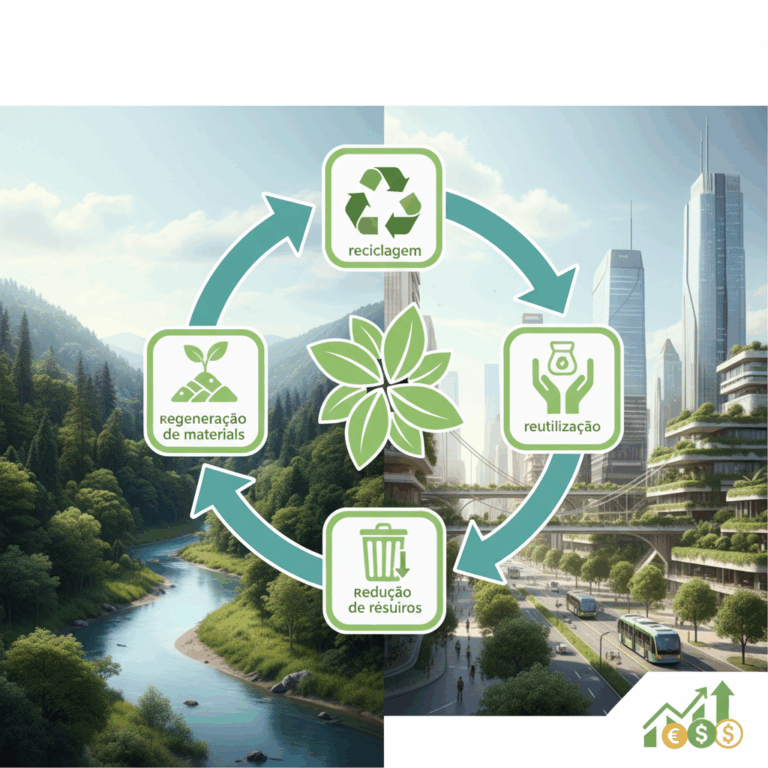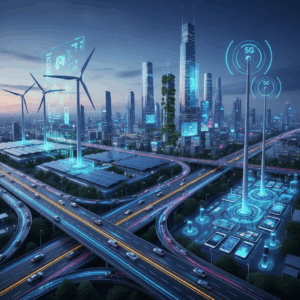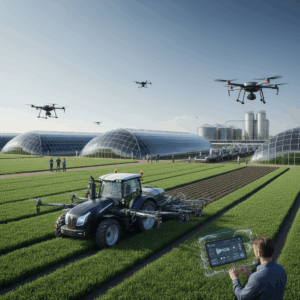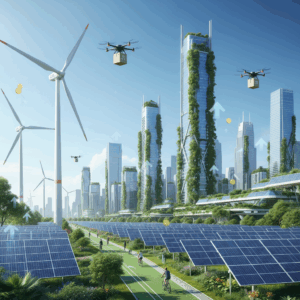Fundamentals of the circular economy
The circular economy It is a model that maximizes the value of resources by extending their useful life through reuse, recycling, and repair, as opposed to the linear model.
This system provides clear environmental and economic benefits by reducing waste and pollution while optimizing costs and promoting innovation and job creation in sustainable sectors.
Concept and advantages of the circular model
The circular model seeks to keep resources in use for as long as possible, reducing the need to extract new raw materials, which favors the environmental sustainability.
Advantages such as waste reduction, decreased polluting emissions, and energy savings make it an efficient and beneficial system for the planet and businesses.
Furthermore, this approach fosters innovation, encourages job creation in green sectors, and improves security of material supply, reducing dependence on new resources.
Differences with the traditional linear model
The traditional linear model is based on the scheme "extract, produce, consume and discard", generating a large amount of waste and environmental pollution.
In contrast, the circular economy promotes a closed flow of materials through repair, reuse, and recycling, avoiding the loss of resources and reducing environmental impact.
This allows for the conservation of biodiversity and reduces pressure on natural resources, improving economic resilience to fluctuations in the global market.
Environmental benefits of resource reuse
The reuse of resources in the circular economy plays a crucial role in improving the environment, reducing waste and protecting ecosystems.
This practice reduces pollution and preserves biodiversity, promoting a more efficient and sustainable use of available raw materials.
Furthermore, it contributes to mitigating climate change by reducing polluting emissions from traditional production.
Waste and pollution reduction
One of the main environmental benefits of the circular economy is the significant reduction of waste that end up in landfills or in the environment.
By reusing, recycling and repairing, waste generation is avoided and air, water and soil pollution is reduced thanks to less incineration and landfilling of waste.
This helps maintain healthy ecosystems and mitigates the damage caused by the extractive and polluting techniques of the traditional linear model.
Preservation of biodiversity and saving of raw materials
Responsible consumption and resource reuse protect natural habitats, preserving the biodiversity by preventing its degradation.
Reducing the extraction of raw materials decreases the pressure on ecosystems and natural resources, thus prolonging their long-term availability.
Furthermore, it promotes more efficient and conscious use, which is essential to conserve biological richness and maintain environmental balance.
Interesting fact about biodiversity
Protecting biodiversity prevents the loss of species that are essential for vital ecological processes, such as pollination and natural pest control.
Reduction of greenhouse gas emissions
The circular economy contributes to the reduction of greenhouse gas emissions by minimizing the production of new goods and energy consumption.
Processes such as extraction and manufacturing are major sources of CO2; by reusing materials, this significant carbon footprint is reduced.
This change favors the fight against global warming and helps to meet international climate sustainability goals.
Economic impact of the circular economy
The circular economy represents an economic opportunity by optimizing resources and reducing production costs, minimizing waste and dependence on new raw materials.
This model also strengthens the security of material supply, protecting companies from market volatility and global shortages.
Furthermore, it promotes job creation and stimulates technological and business innovation, fostering sustainable and resilient economic growth.
Cost optimization and security of supply
Reuse and recycling allow companies to reduce expenses on raw materials and waste management, increasing the efficiency and competitiveness of the business.
This approach reduces vulnerability to price fluctuations or supply disruptions, ensuring operational stability in times of crisis.
Thus, the circular economy increases the autonomy of industries, strengthening more sustainable and resilient value chains in the face of external challenges.
Job creation and promotion of innovation
The transition to a circular model creates new jobs in sectors such as repair, recycling and sustainable design, expanding the labor market.
This process fosters technological and business innovation, as companies seek creative solutions to maximize the use of materials.
Furthermore, the circular economy promotes a culture of continuous improvement and the development of more durable products, boosting competitiveness and economic growth.
Perspectives and sustainability of the circular model
The circular economy model presents a promising future, focused on environmental sustainability and economic growth. The European Union is promoting policies for its adoption.
The circular economy is expected not only to reduce environmental impact but also to foster inclusive and resilient economic development, adapted to current challenges.
Economic growth and job creation according to the European Union
The European Union estimates that the circular economy can generate additional GDP growth by optimizing resources and creating new opportunities in green sectors.
In addition, the creation of hundreds of thousands of jobs is expected, especially in the areas of repair, recycling and sustainable technologies, boosting innovation.
These jobs contribute to strengthening the local economy and resilience to international crises, increasing security in the supply of materials.
Contribution to sustainable and resilient development
The circular economy promotes sustainable development by balancing economic growth, environmental care and social well-being, guaranteeing resources for future generations.
By reducing the extraction of raw materials and minimizing waste, the resilience of production systems is strengthened in the face of global fluctuations and challenges.
This model promotes responsible and collaborative practices that foster innovation, efficiency, and adaptation to climate and economic changes.






